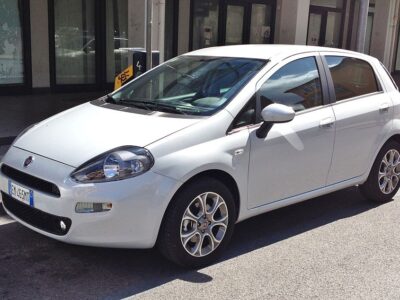
Diagnosing and Repairing Fiat Punto Suspension Clunking Noises

The Fiat Punto is a popular supermini car known for its reliability and performance. However, like any vehicle, it can be prone to certain issues, particularly with its suspension system. One common problem reported by owners is a clunking noise emanating from the suspension, which can be unsettling and indicative of a more serious underlying issue. Diagnosing and repairing the source of this noise is crucial to maintaining the car's overall health and ensuring a smooth ride. This article will guide you through the process of identifying and fixing the causes of suspension clunking noises in your Fiat Punto.
- Diagnosing the Source of Clunking Noises in Fiat Punto Suspension
- How to diagnose clunking suspension?
- Why is my suspension making a knocking noise?
- What is the lifespan of a Fiat Punto?
- What problems does Fiat Punto have?
- Frequently Asked Questions
- What are the common causes of suspension clunking noises in Fiat Punto?
- How do I diagnose the source of the clunking noise in my Fiat Punto's suspension?
- Can I repair the suspension clunking noise myself or should I seek professional help?
- What are the potential consequences of ignoring the suspension clunking noise in my Fiat Punto?
Diagnosing the Source of Clunking Noises in Fiat Punto Suspension
The Fiat Punto is a popular supermini car known for its reliability and performance. However, like any vehicle, it can develop issues over time, one of which is a clunking noise emanating from the suspension. Identifying the source of this noise is crucial for effective repair and to prevent further damage to the vehicle's suspension system.
Understanding the Suspension System
The suspension system of a Fiat Punto is designed to absorb bumps and irregularities on the road, providing a smooth ride and stable handling. It comprises various components including shock absorbers, struts, springs, and anti-roll bars. Each of these components plays a vital role in the overall performance of the suspension. A clunking noise can indicate a problem with one or more of these parts.
| Component | Function | Common Issues |
|---|---|---|
| Shock Absorbers | Control the oscillations of the springs | Leakage, wear, or damage |
| Struts | Combine the functions of shock absorbers and springs | Wear, damage, or misalignment |
| Springs | Support the weight of the vehicle and absorb bumps | Breakage, sagging, or corrosion |
Identifying the Cause of Clunking Noises
To diagnose the source of a clunking noise in the Fiat Punto's suspension, it's essential to inspect the suspension components thoroughly. This involves checking for signs of wear and tear, corrosion, or damage on parts like ball joints, bushings, and mountings. A thorough inspection can help pinpoint the exact cause of the noise.
| Inspection Point | What to Look For |
|---|---|
| Ball Joints | Signs of wear, rust, or play in the joint |
| Bushings | Cracks, deterioration, or excessive movement |
| Mountings | Looseness, damage, or wear on the mounting points |
Repairing the Suspension
Once the source of the clunking noise has been identified, the necessary repairs can be carried out. This may involve replacing worn-out components, tightening loose mountings, or addressing any other issues found during the inspection. It's crucial to use genuine or high-quality replacement parts to ensure the longevity and performance of the suspension system.
| Repair Task | Description |
|---|---|
| Replacing Worn Components | Install new parts to restore the suspension's performance |
| Tightening Loose Mountings | Secure the suspension components to prevent further issues |
| Aligning Suspension | Ensure proper alignment to prevent uneven wear and improve handling |
How to diagnose clunking suspension?

To diagnose a clunking suspension, you need to identify the source of the noise and understand the underlying causes. A clunking suspension is typically characterized by a loud clunking or knocking sound when driving over bumps or uneven road surfaces. The noise is usually caused by worn or loose components in the suspension system.
Identifying the Source of the Noise
The first step in diagnosing a clunking suspension is to identify the source of the noise. This can be done by paying attention to when the noise occurs and under what conditions. For example, if the noise happens when driving over bumps, it may indicate a problem with the shock absorbers or struts.
- Drive over different types of road surfaces to see if the noise changes or persists.
- Pay attention to the location of the noise, whether it's coming from the front or rear of the vehicle.
- Check if the noise occurs when turning or braking, which can indicate a problem with the suspension or steering components.
Inspecting the Suspension Components
Once you have identified the source of the noise, the next step is to inspect the suspension components. This includes checking for worn or loose parts, such as ball joints, control arms, and bushings.
You may be interested in reading Fiat Punto ECU and Electrical Problems: Troubleshooting Guide
Fiat Punto ECU and Electrical Problems: Troubleshooting Guide- Visually inspect the suspension components for signs of wear or damage.
- Check the suspension components for looseness or play by moving them back and forth.
- Use a pry bar to check for looseness in the suspension components, such as the control arms and ball joints.
Testing the Suspension
To further diagnose the issue, you can perform some tests on the suspension. This can include bouncing the vehicle up and down to check for excessive movement or rebound.
- Bounce the vehicle up and down to check for excessive movement or rebound.
- Drive the vehicle over a series of bumps to see if the noise persists or changes.
- Use a jack to lift the vehicle and check the suspension components for looseness or play while the vehicle is off the ground.
Why is my suspension making a knocking noise?

Your suspension is making a knocking noise likely due to worn-out or damaged components. The suspension system is crucial for a smooth ride, handling, and stability. When it starts to fail, it can cause various noises, including knocking sounds.
Causes of Suspension Knocking Noise
The knocking noise from your suspension can be attributed to several factors. It is essential to identify the root cause to rectify the issue. The primary causes include worn-out bushings, loose or damaged components, and excessive wear on the suspension parts.
- Worn-out or damaged ball joints
- Loose or worn-out suspension bushings
- Damaged or worn-out shock absorbers or struts
Effects of Ignoring Suspension Knocking Noise
Ignoring the knocking noise from your suspension can lead to more severe problems. If left unaddressed, it can cause further damage to other components, leading to costly repairs. Moreover, a faulty suspension can compromise the safety and handling of your vehicle, potentially leading to accidents.
- Increased risk of accidents due to reduced vehicle stability
- Premature wear on other suspension and steering components
- Higher repair costs due to neglected maintenance
Diagnosing Suspension Knocking Noise
To diagnose the knocking noise, it is recommended to inspect the suspension system thoroughly. Look for signs of wear, damage, or excessive play in the components. You can also perform a series of tests, such as bouncing the vehicle or checking for looseness in the suspension parts.
- Visual inspection of suspension components for wear or damage
- Bouncing test to check for excessive rebound or oscillation
- Checking for looseness or play in suspension parts
What is the lifespan of a Fiat Punto?

The lifespan of a Fiat Punto largely depends on various factors such as maintenance, driving conditions, and model year. Generally, a well-maintained Fiat Punto can last for a considerable amount of time. The average lifespan of a Fiat Punto is around 150,000 to 200,000 miles, which translates to approximately 10 to 15 years.
Factors Affecting Lifespan
Several factors contribute to the lifespan of a Fiat Punto. The way the car is driven and maintained plays a significant role in determining its longevity.
Here are some key factors that can impact the lifespan of a Fiat Punto:
 Fiat Punto ECU and Electrical Problems: Troubleshooting Guide
Fiat Punto ECU and Electrical Problems: Troubleshooting Guide How to Replace the Clutch in a Fiat Punto
How to Replace the Clutch in a Fiat Punto- Regular maintenance: Regular servicing and replacement of worn-out parts can significantly extend the life of the vehicle.
- Driving conditions: Driving in harsh weather conditions or on rough roads can reduce the lifespan of the car.
- Model year: Newer models tend to have improved reliability and longevity compared to older models.
Common Issues Affecting Lifespan
Some common issues can affect the lifespan of a Fiat Punto, including engine problems, transmission issues, and electrical faults.
Here are some common problems that can impact the lifespan of a Fiat Punto:
- Engine oil leaks: Oil leaks can cause significant damage to the engine if left unchecked.
- Clutch failure: Premature clutch failure can be a costly repair and may be caused by driving habits or wear and tear.
- Electrical issues: Faulty wiring or electrical components can cause a range of problems, from minor annoyances to major issues.
Maintenance Tips to Extend Lifespan
To maximize the lifespan of a Fiat Punto, regular maintenance is essential. This includes routine checks and replacements of critical components.
Here are some maintenance tips to extend the lifespan of a Fiat Punto:
- Regular oil changes: Regular oil changes can help to extend the life of the engine.
- Replace worn-out parts: Replacing worn-out parts, such as brake pads and timing belts, can help prevent more costly repairs down the line.
- Check and maintain tire pressure: Proper tire pressure can improve fuel efficiency and reduce wear on the tires.
What problems does Fiat Punto have?

The Fiat Punto is a supermini car that was produced by the Italian manufacturer Fiat from 1993 to 2018. Over the years, various model years and trim levels have been associated with several problems.
Reliability Issues
The Fiat Punto has been known to have some reliability issues, particularly with its electrical systems and engine. Some owners have reported problems with the car's electrical architecture, including issues with the battery, alternator, and starter motor.
- Faulty wiring and electrical connections can cause a range of problems, from minor annoyances to major system failures.
- Some models are prone to engine oil leaks, which can lead to costly repairs if not addressed promptly.
- The Punto's engine management system can be temperamental, leading to issues with engine performance and fault codes.
Safety Concerns
Some model years of the Fiat Punto have been associated with safety concerns, particularly with regard to its crash test performance and certain mechanical issues.
- The Punto's crash test ratings have varied over the years, with some models performing poorly in certain tests.
- Some owners have reported issues with the car's braking system, including problems with the brake pads and rotors.
- The Punto's suspension and steering components can be prone to wear and tear, potentially leading to reduced safety and handling.
Common Mechanical Problems
The Fiat Punto has been known to experience a range of mechanical problems, including issues with its transmission, engine, and cooling system.
- The Punto's transmission can be prone to wear and tear, particularly in models with high mileage.
- Some models are known to have issues with the engine's timing belt, which can lead to costly repairs if it fails.
- The Punto's cooling system can be prone to leaks and other issues, potentially leading to engine overheating and damage.
Frequently Asked Questions
What are the common causes of suspension clunking noises in Fiat Punto?
The common causes of suspension clunking noises in Fiat Punto include worn-out or loose suspension components, such as ball joints, bushings, or drop links. Other causes may be damaged or corroded suspension parts, incorrect suspension alignment, or worn-out shock absorbers. Clunking noises can also be due to loose or damaged mounting points or brackets.
How do I diagnose the source of the clunking noise in my Fiat Punto's suspension?
To diagnose the source of the clunking noise, inspect the suspension components, checking for signs of wear or damage. Road test the vehicle to replicate the noise and identify when it occurs. Use a systematic approach to isolate the source, checking each component and its mounting points. Listen carefully to the noise and observe the suspension's movement to determine the cause.
You may be interested in reading Fiat Punto ECU and Electrical Problems: Troubleshooting Guide
Fiat Punto ECU and Electrical Problems: Troubleshooting Guide How to Replace the Clutch in a Fiat Punto
How to Replace the Clutch in a Fiat Punto Fixing Interior Trim Problems in the Fiat Punto
Fixing Interior Trim Problems in the Fiat PuntoCan I repair the suspension clunking noise myself or should I seek professional help?
If you have experience with suspension repairs and the necessary tools, you can attempt to repair the clunking noise yourself. However, if you're unsure or lack experience, it's recommended to seek professional help from a qualified mechanic. They can accurately diagnose the issue and perform the necessary repairs, ensuring your safety on the road and preventing further damage.
What are the potential consequences of ignoring the suspension clunking noise in my Fiat Punto?
Ignoring the suspension clunking noise can lead to further damage to the suspension components, potentially causing more costly repairs. It can also compromise the vehicle's stability and handling, increasing the risk of accidents. Additionally, neglecting the issue may lead to uneven tire wear, reducing the lifespan of the tires and affecting the overall performance of the vehicle.
If you want to know other articles similar to Diagnosing and Repairing Fiat Punto Suspension Clunking Noises you can visit the category Fiat Punto.
Deja una respuesta

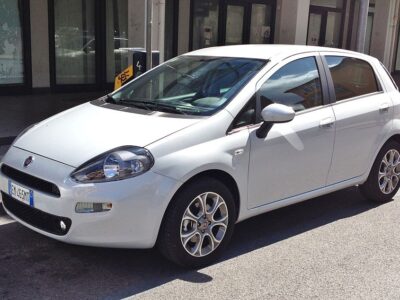
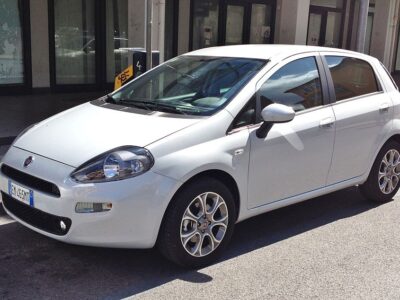

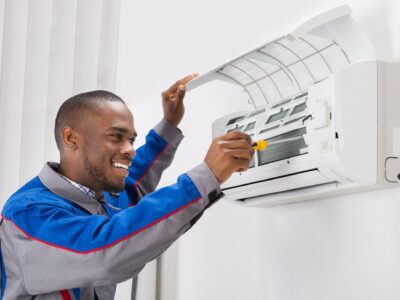
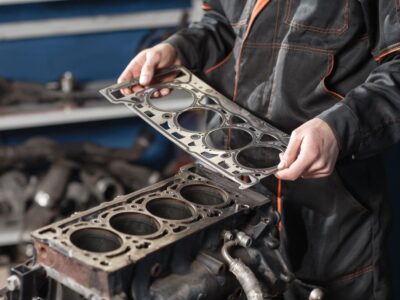
More content of your interest